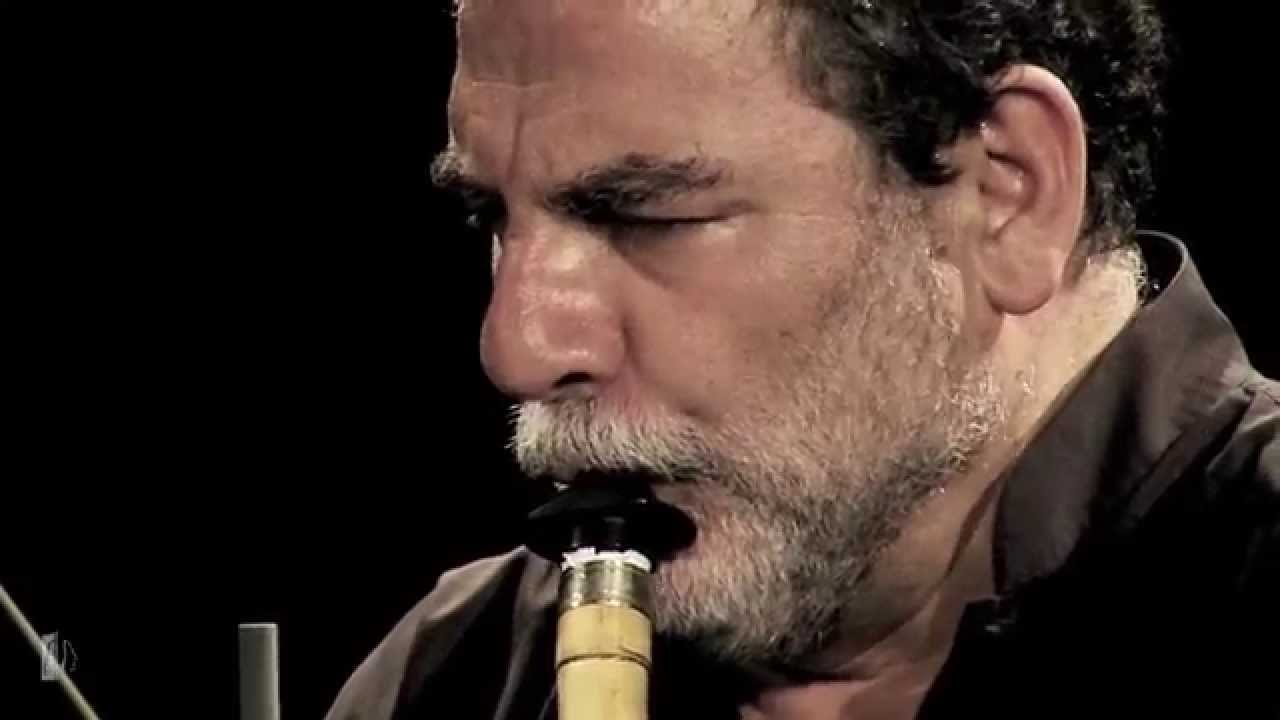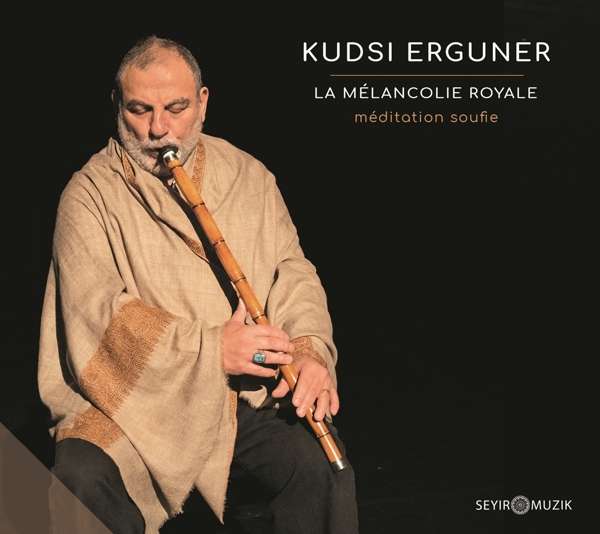Ney music with a mission

“Listen to the reed flute, how it tells its tale / How it bewails the pain of separation” – it is no coincidence that the Persian mystic and poet Rumi began the Masnawi, his 25,000-verse masterwork, with the ney as a symbol. After all, the ney, like almost no other Oriental instrument, represents the yearning of the soul for its origins, for a union with the divine source from which it originated.
For the Sufis, the ney serves as a perfect metaphor. In order to make this instrument, a reed is first torn from the reed bed, just as the human soul is uprooted and feels alienated in this world.
As the first step in transforming the reed into an instrument, the flute maker completely hollows out the reed, just as individuals on the path to perfection must empty themselves from all desires and egotistical traits. Then he takes a hot iron rod to bore holes in the emerging flute. This process stands for all the trials and tribulations the spiritual aspirant experiences on the path towards maturity. Only upon completion, after all this elaborate work, can the breath of the divine flute player flow through the body of the ney.
A listener to Kudsi Erguner’s new album – “La Melancolie Royale. Meditation Soufie” – might be inclined to think that the master has set humanity's existential journey to music. The ney virtuoso's album consists of six tracks, which celebrate the original sound of the reed flute in all its facets. For the most part, the sound of the instrument resembles that of a soft sigh, with delicate melodic lines and, to Western ears, a tonality that is unusually nuanced and characterised by many subtle ornaments.
Mellow, yet simultaneously ascetic
In performing his instrument, Erguner, the neyzen, the name given to a ney player in Turkish, displays acrobatics with his breath and achieves a meditative state that gradually draws in the listener as well. Erguner’s playing exhibits enchanting beauty that immerses the receptive listener into a deep sense of spirituality. The virtuoso intentionally excludes other instruments from the performance. He wants to preserve the singularity of the ney and allow it to tell its own story. As a result the album is at once both mellow and ascetic.

Kudsi Erguner is one of the most famous ney performers to have made a name for himself on the world music scene. Born in 1952 in the eastern Turkish city of Diyarbakir to a family of musicians, Erguner was taught to play the ney by his father and his grandfather. Both were so well known in Anatolia as outstanding masters of their instrument: even today people in Turkey speak of the “Erguner school” of ney playing.
When he was seventeen, Erguner became a member of the Istanbul Radio Orchestra, and at 23, he moved to France to study architecture and musicology. In Paris, he founded the Mevlana Institute, where he taught classical music and the precepts of Sufism.
As a flute virtuoso, he soon made a name for himself in Europe. Erguner collaborated with world music stars like Peter Gabriel and at the same time engaged in research into traditional musical cultures in regions such as North Africa, Afghanistan, and South Asia. In the 1980s, he served UNESCO as commissioner for Turkish musical culture.
In 2008, as part of the Frankfurt Book Fair’s Turkish Guest Country Programme, Erguner headlined a highly-acclaimed concert in the Alte Oper in Frankfurt, where, together with his ensemble, he performed music both as composer and flautist in the traditional Turkish Sufi style to accompany poetry from Goethe’s East-West Divan. In describing Erguner’s accomplishments, the renowned World Music Central forum writes, “He has documented and revived an almost forgotten musical tradition and brought it to the notice of a Western public, thereby ensuring its place in the cultural heritage of Europe.”
For centuries, the ney has been a native instrument in large parts of the Islamic world, in particular, in Iran and Arabic-speaking regions. It was perfected, however, in the Ottoman Empire within the Mevlivi religious order, an 800-year-old Sufi brotherhood that bases its teachings on the works of Rumi.
The ney was the main instrument of the Mevlevis for hundreds of years and served a ritual function in accompanying the Sema ceremonies. The Mevlevis created their own musical repertoire for this famous rotating form of meditation. An example of this are the compositions of the 17th century Ottoman music master Buhurizade Mustafa Itri, a contemporary of Bach, with whom he is sometimes compared.
Today, Erguner is at home in this musical tradition like almost no other musician. Even as a child, his father regularly took him along to visit Sufi circles in Istanbul, where he became familiar with the Mevlevi order. In his autobiography, “Journeys of a Sufi Musician”, which was published in 2005, Erguner describes the gradual disappearance of Sufi traditions within the modern Turkish republic – a result of Ataturk’s 1925 ban on the Sufi order.
The prestigious journal Songlines wrote in a review of Erguner’s book at the time, “Whatever revival [of Sufi music] there may be, it is for the most part due to the efforts of Erguner and his colleagues. He is excellent at bridging the divide between East and West and all the irony that it entails.”
A royal melancholy
The title of his new album, “La Mélancolie Royale”, is well considered and alludes to the historical dynamics between East and West. The eponymous phrase in the title originates in an Ottoman story. Under the regency of Abdul Mejid I (1839-1861), the Ottoman sultanate developed a preference for Western music. As a result, it began to neglect the thousand-year-old national tradition of Eastern court music.
One day, so it is told, as Abdul Mejid’s son Abdul Hamid (1876-1918) heard the famous musician Tanburi Cemil Bey playing the long-necked lute, he could no longer bear the melancholy of the music. His valet was instructed to put a halt to the tanbur performance and he whispered in the ear of the virtuoso that he had caused the potentate to suffer a “teessur-u sahane” or a “royal melancholy”.
Erguner turns to this anecdote to remind us of the spiritual character of Ottoman court music. Ottoman sacred music must be understood as a spiritual aural tradition that was completely different in character from the temporal sounds echoing from the palaces of European potentates. Yet, it did not take long for Turkish music to adapt to European trends, becoming secularised in the process.
“I suggested this title for the album in order to stress the radical and fundamental philosophical transformation of the role ascribed to this music by our scholars, who since the 19th century have fixated on Western civilization,” explains Erguner, who rejects any kind of differentiation between Ottoman court music and the Sufi musical tradition, as these are in reality branches of one and the same tradition.
Even though his reputation is that of a world musician, Erguner has always regarded the concept of “world music” with a critical eye as a collective term for non-Western musical traditions. In an interview, Eren Guvercin once asked the ney player about his fusion of Mevlevi music with Goethe’s poetry on German stages. Erguner answered, “Turkey always wants to prove to Europe that it is also European. That is why festivals constantly feature Turkish pianists playing Mozart and why Turkish pop musicians are displayed in showcases, not to mention the techno Sufis … . I ask myself, is there nothing left of our past, of our civilization? Goethe provides the best answer to my question! The world also needs other cultures besides that of the West.”
As such, “La Melancolie Royale” with its long solo “Ney Taksimi” (ney improvisations) is perhaps a little exhausting for the untrained listener at first, but in light of Erguner’s cultural preservation work, which confronts the trivial and ephemeral, a real accomplishment. This is ney music with a mission.
Marian Brehmer
© Qantara.de 2020
Translated from the German by John Bergeron